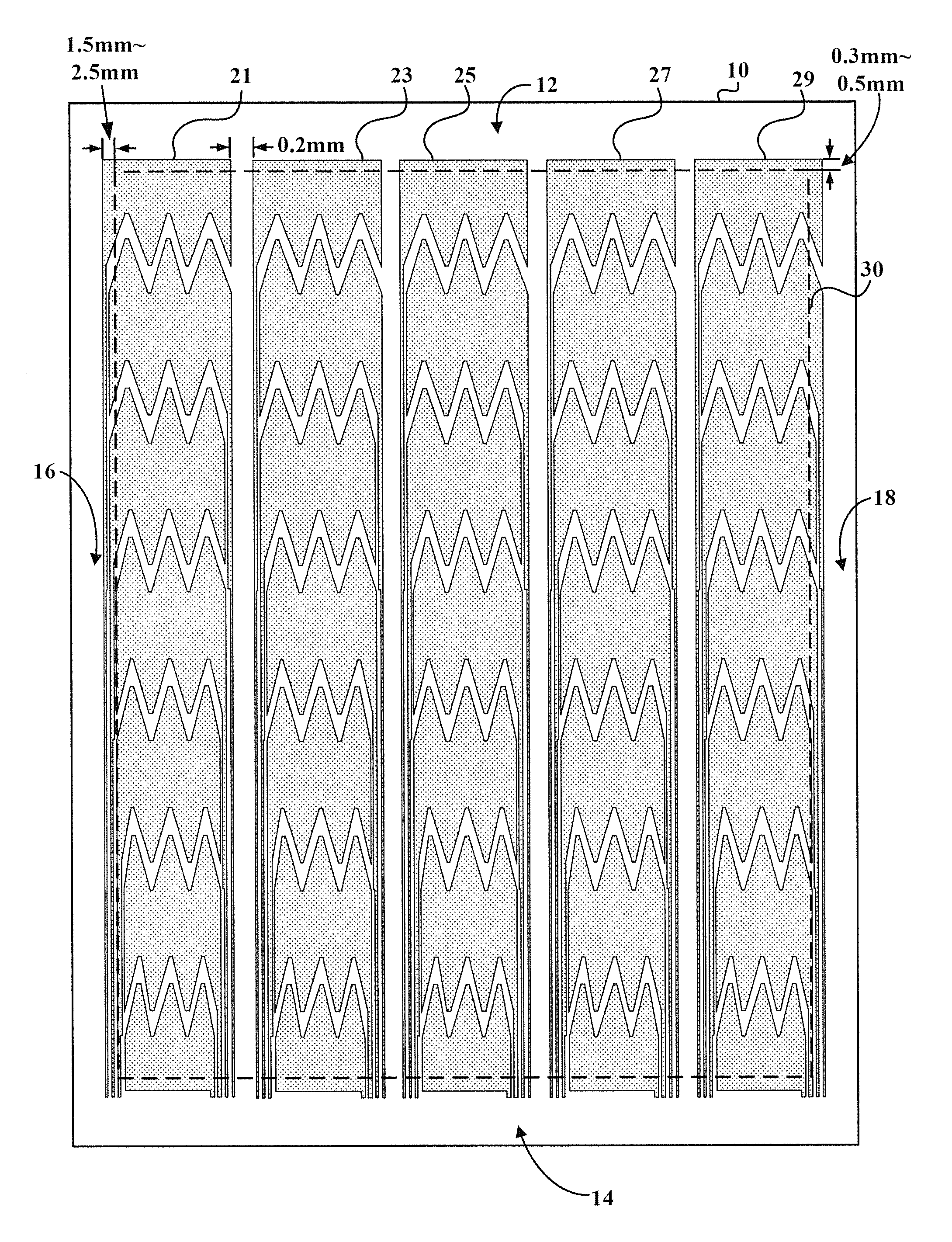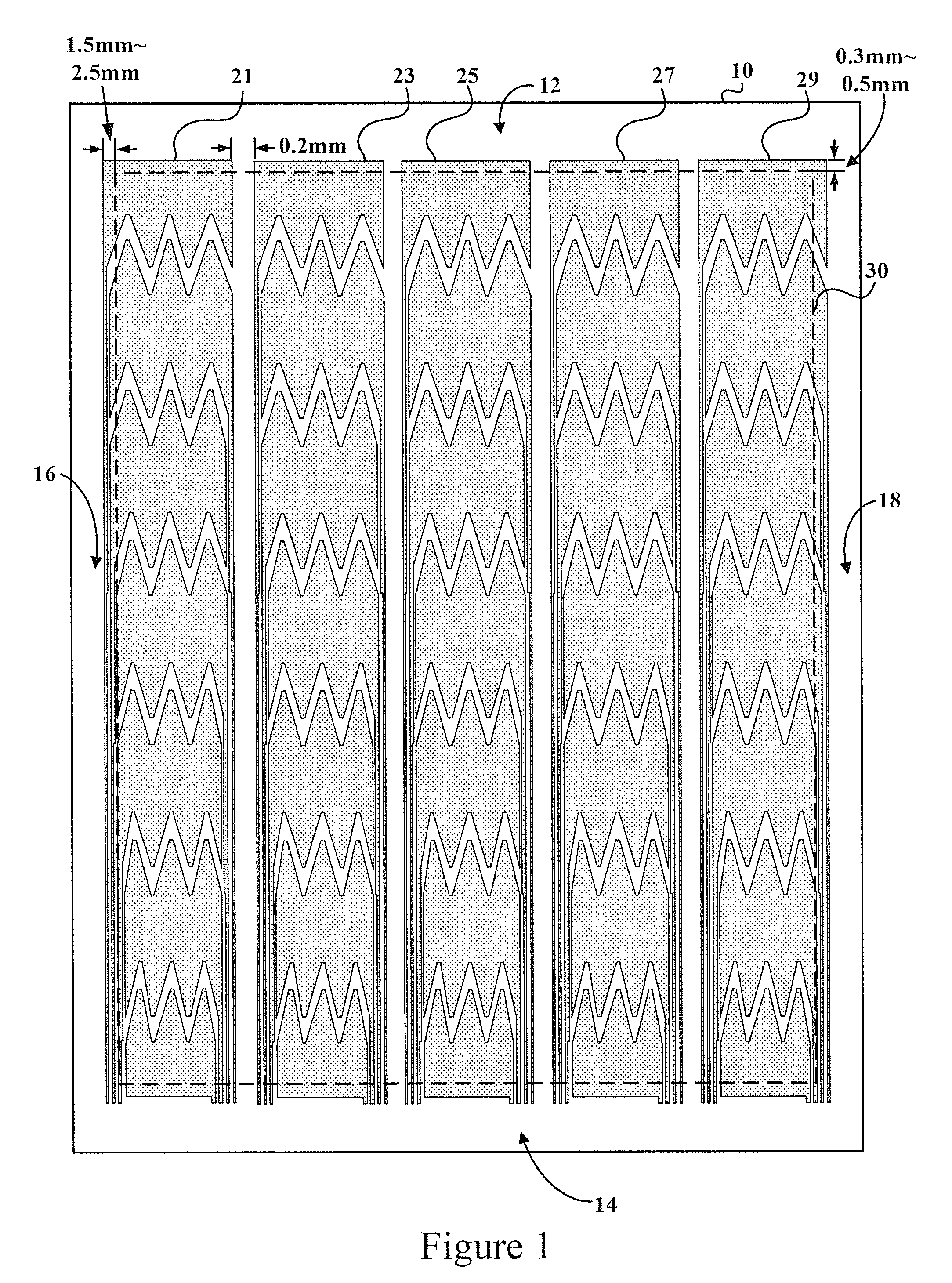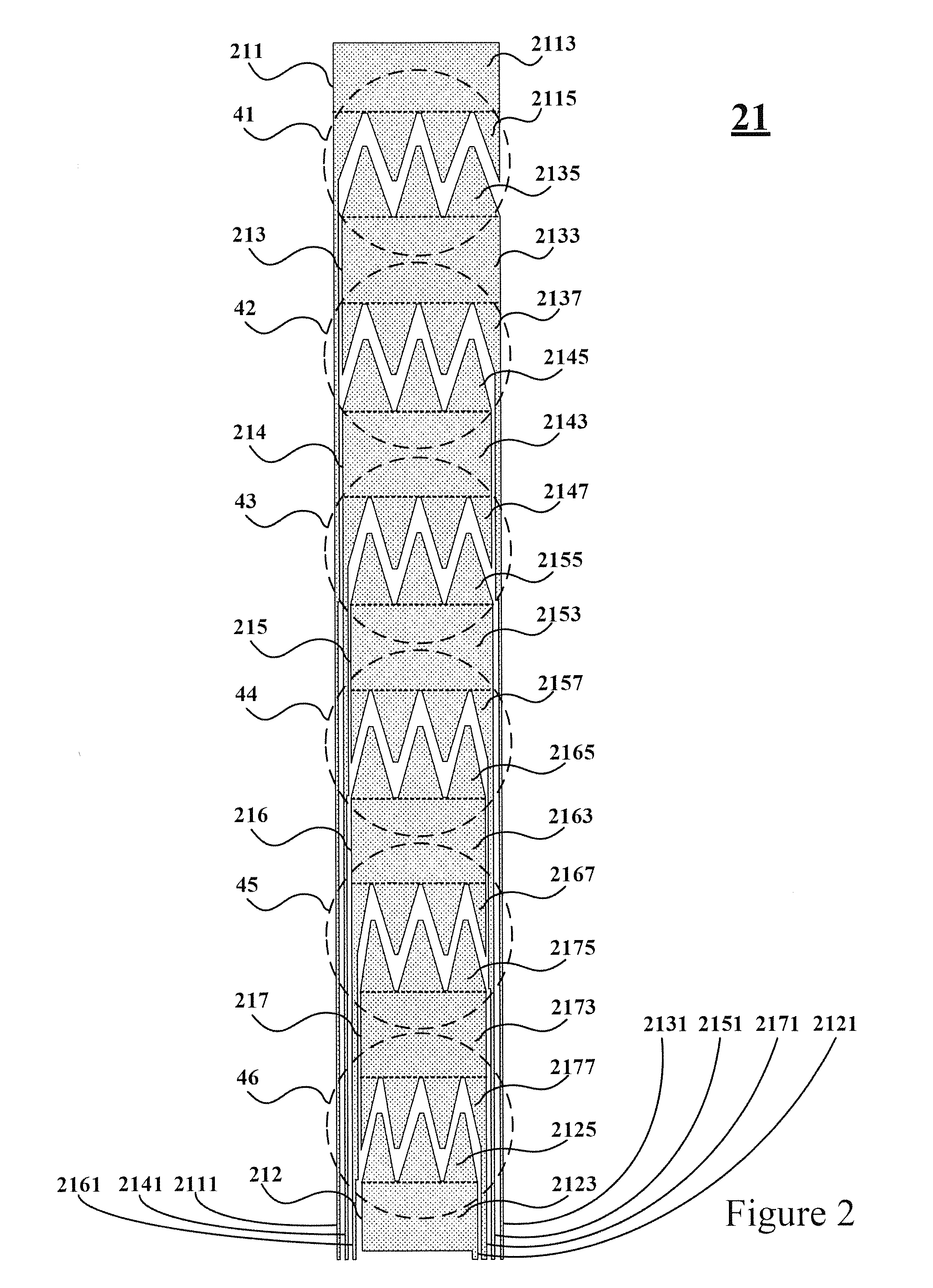Sensing structure of touch panel
a touch panel and sensing technology, applied in capacitance measurement, resistance/reactance/impedence, instruments, etc., can solve the problems of limiting the requirement of volume and screen size is extremely strict, and the drawback of higher manufacturing cost and complicated processes, so as to enhance enhance the touch operation region. , the effect of enhancing the sensitivity of the touch panel
- Summary
- Abstract
- Description
- Claims
- Application Information
AI Technical Summary
Benefits of technology
Problems solved by technology
Method used
Image
Examples
Embodiment Construction
[0024]In order to make the structure and characteristics as well as the effectiveness of the present invention to be further understood and recognized, the detailed description of the present invention is provided as follows along with embodiments and accompanying figures.
[0025]FIG. 1 shows a schematic diagram of the sensing structure of touch panel according to a preferred embodiment of the present invention. As shown in FIG. 1, the sensing structure of touch panel according to the present invention comprises a substrate 10 and a plurality of electrode groups 21, 23, 25, 27, 29. The substrate 10 has a first side 12 and a second side 14 corresponding to each other and has a third side 16 and a fourth side 18 corresponding to each other. The plurality of electrode groups 21, 23, 25, 27, 29 are arranged in parallel on the substrate 10 with a distance therebetween. According to the present embodiment, the distance between the plurality of electrode groups 21, 23, 25, 27, 29 is selected...
PUM
| Property | Measurement | Unit |
|---|---|---|
| width | aaaaa | aaaaa |
| width | aaaaa | aaaaa |
| overlap length | aaaaa | aaaaa |
Abstract
Description
Claims
Application Information
 Login to View More
Login to View More - R&D
- Intellectual Property
- Life Sciences
- Materials
- Tech Scout
- Unparalleled Data Quality
- Higher Quality Content
- 60% Fewer Hallucinations
Browse by: Latest US Patents, China's latest patents, Technical Efficacy Thesaurus, Application Domain, Technology Topic, Popular Technical Reports.
© 2025 PatSnap. All rights reserved.Legal|Privacy policy|Modern Slavery Act Transparency Statement|Sitemap|About US| Contact US: help@patsnap.com



